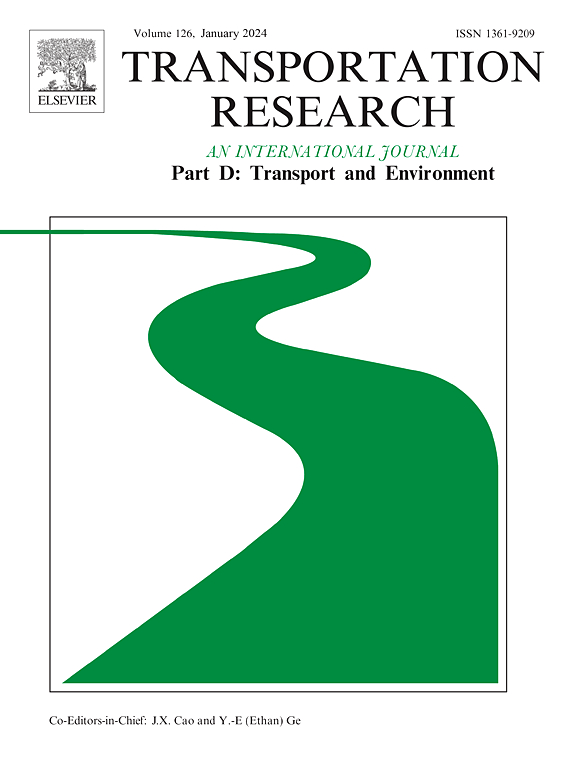Non-exhaust emissions of battery electric vehicles and their impact on tunnel ventilation
IF 7.7
1区 工程技术
Q1 ENVIRONMENTAL STUDIES
Transportation Research Part D-transport and Environment
Pub Date : 2025-07-29
DOI:10.1016/j.trd.2025.104929
引用次数: 0
Abstract
The significant characteristic of non-exhaust emissions of battery electric vehicles (BEVs) has a crucial impact on the tunnel ventilation design. This study established a model to quantify the non-exhaust emission factors applicable to the calculation of tunnel ventilation. Furthermore, it explores the impact of BEVs on tunnel ventilation through a case study. The results show that BEVs are 23 % heavier and their PM2.5 and PM10 emissions increased by 15.4 % and 13.7 %, respectively. Regenerative braking significantly improves the emissions level, but its effectiveness diminishes at higher speeds. Without regenerative braking, the increase in BEVs leads to an increase in the tunnel required ventilation. The required ventilation decreased by 7.3 % at 50 % BEVs with full regenerative braking. When NOx dictates the required air, ventilation demand decreases rapidly with BEVs increase. The research results can provide important references for the update of ventilation standards for tunnels and the non-exhaust emissions reduction strategies.

纯电动汽车的非废气排放及其对隧道通风的影响
纯电动汽车无尾气排放的显著特性对隧道通风设计有着至关重要的影响。本研究建立了适用于隧道通风计算的非排风排放因子的量化模型。并通过实例探讨了电动汽车对隧道通风的影响。结果表明,纯电动汽车的重量增加了23%,其PM2.5和PM10排放量分别增加了15.4%和13.7%。再生制动显著提高排放水平,但其有效性在更高的速度下降。如果没有再生制动,电动汽车的增加将导致隧道所需通风的增加。在完全再生制动的50%纯电动汽车下,所需的通风减少了7.3%。当NOx决定所需风量时,随着电动汽车的增加,通风需求迅速下降。研究结果可为隧道通风标准的更新和无排风减排策略的制定提供重要参考。
本文章由计算机程序翻译,如有差异,请以英文原文为准。
求助全文
约1分钟内获得全文
求助全文
来源期刊
CiteScore
14.40
自引率
9.20%
发文量
314
审稿时长
39 days
期刊介绍:
Transportation Research Part D: Transport and Environment focuses on original research exploring the environmental impacts of transportation, policy responses to these impacts, and their implications for transportation system design, planning, and management. The journal comprehensively covers the interaction between transportation and the environment, ranging from local effects on specific geographical areas to global implications such as natural resource depletion and atmospheric pollution.
We welcome research papers across all transportation modes, including maritime, air, and land transportation, assessing their environmental impacts broadly. Papers addressing both mobile aspects and transportation infrastructure are considered. The journal prioritizes empirical findings and policy responses of regulatory, planning, technical, or fiscal nature. Articles are policy-driven, accessible, and applicable to readers from diverse disciplines, emphasizing relevance and practicality. We encourage interdisciplinary submissions and welcome contributions from economically developing and advanced countries alike, reflecting our international orientation.

 求助内容:
求助内容: 应助结果提醒方式:
应助结果提醒方式:


